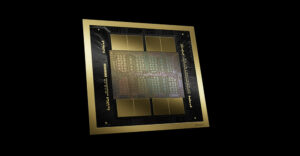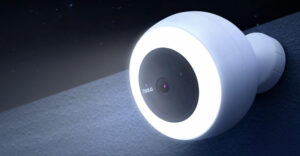
I spent several days at Comdex last week. If you were there — and you work as a systems builder, a parts vendor or an analyst — Comdex was a great show. If you work as an IT executive, you were probably disappointed because the show set IT expectations that it didn’t fulfill. As usual, rumors were flying around that this would be the last Comdex. But with a reported 50 thousand people at the event, it seems a shame to throw the baby out with the bath water.
I saw more business being done at this year’s Comdex than in previous years when the attendance was well over 200,000. Altogether, the show was pleasant and it was easy to get around. Because I like to build modified PCs as a hobby, the show floor was like a big toy store to me. My favorite products on the floor included a Zalman cast-aluminum case with built-in heat sinks and a water-cooling tower from the same company. My favorite PC overall was one built by Acer and cobranded with Ferrari. It was a very clean design — in red of course — and I could picture myself walking into a meeting and, for once, wipe the superior look from the faces of the folks using Apple laptops.
The best event was put on by VIA, a company that makes a really small motherboard that enthusiasts are building into all kinds of products — from little robots to video security servers to media players. These small motherboards can run everything from embedded Linux to embedded XP, powering things like portable VoIP PC phones. The white-box robot — which consisted of a computer case, an Internet camera and motorized wheels — looked like the robots from the movie “Silent Running.” It was probably my favorite device at the show.
Best Use of Linux
In looking at a lot of these products, I realized I’d found my favorite use of Linux. Many of the devices run an embedded version of Linux, hiding the complexities of the product behind a very simple user interface. One of the products, a home server from Exentra, even looked like it might have been designed by Apple. It had a set-up process little different from the set-up procedures for consumer-targeted WiFi access points.
If I were writing about gifts for the holidays, the Exentra product would be on my short list. Along with it would be the Tempest Network Digital Recorder, which aggregates four digital feeds (think security cameras), broadcasts those feeds over the Web and records events when it detects motion. It also runs embedded Linux and costs under US$500. Then there was the MediaREADY 4000 from Video Without Boundaries, a media-center PC running embedded Linux, also for under $500.
In fact, I liked more of the new things at the little VIA event than I did elsewhere at Comdex. One other item worth noting from the VIA event was the little Nimble V5 VoIP phone. This is one of those products that you have to see to understand, so I won’t try to describe the experience, exept to say that I was just enthralled with the creativity it took to build something like this.
To me, this event showcases what I wrote about in last week’s column “Innovation Loses If Open Source Wins” — that open-source software destroys software innovation by shifting innovation to the hardware vendors over time. In almost all these cases of cool new embedded Linux devices from Comdex, the operating system wasn’t overly important; the user experience was.
I think some of these devices showcase the future of PC computing, in which we once again care more about what we are doing and less about what we are using to do it.
The Death of Sun, Apple and Novell
As I also mentioned last week, I moderated a panel made up of Ted Farrel (chief architect and director of strategy for Oracle), Greg Stein (chairman of the Apache Software Foundation), John Montgomery (director of developer and platform evangelism for Microsoft) and my friend Laura DiDio (a research director at the Yankee Group).
We spent a lot of time talking about the future. As you can imagine, Oracle and Apache agreed that the future would be solidly open source. Microsoft, of course, did not concur, but it was interesting to see where everyone agreed. It would seem that the collective view is of a world where IT is once again building a lot of custom applications and IT is once again a strategic company component.
I asked the panel to list the companies that would certainly be around in the future — and those that wouldn’t be. The topic of the panel discussion was oriented on software — .NET actually — so don’t read too much into this. The two companies everyone on the panel agreed would be around for the future were Microsoft and IBM. There was some disagreement about Oracle. Microsoft and Oracle said that Oracle would survive; Apache said it wouldn’t.
I also asked which companies would be dead. The panel agreed that it would be Apple, Sun and Novell. The panel also agreed that if it didn’t run on the x86 architecture, it was likely gone. What was really interesting was that almost everyone I spoke with after this panel said that this x86 prediction was like predicting that the sun would rise in the morning — in other words, that it was a given. Most participants felt that the future world of technology would be solidly based on standards and that anyone not using standards would be gone.
IBM’s Slide
Speaking of collapse, I’m getting my first group responses from the big financial firms on the recent reports from Dell and HP. These reports are focusing on the apparent market slide of the IBM PC business and on the fact that the consumer market has caused HP to grow more quickly than even Dell has grown. If this holds into next quarter, I think this clearly puts a period on the HP-Compaq merger and shows that the company is hitting its stride.
What I thought was particularly interesting was that — no matter who I spoke with at the show — everyone generally ranked the vendors in the business space the same way: Dell and HP at the top; Gateway, MPC and Acer in the middle; and white-box vendors at the bottom. IBM wasn’t even on the charts.
One of the massive multinational companies that I met with indicated IBM just wasn’t even worth soliciting bids from anymore because it was clear to them that the company isn’t serous any longer about the segment. Strangely enough, this position wasn’t created by competitive rhetoric but by IBM’s own campaigns and actions.
All in all, I had more fun at this Comdex than I’ve ever had before at this show. I hope this isn’t the last of its kind.
Rob Enderle, a TechNewsWorld columnist, is the Principal Analyst for the Enderle Group, a company founded on the concept of providing a unique perspective on personal technology products and trends.






















































Thanks for the chuckle. Apple’s been on its deathbed for so long according to you buffoons that it’s now comical to read these.
ROFLMAO
""Most participants felt that the future world of technology would be solidly based on standards and that anyone not using standards would be gone."
this is the most preposterous statement i have read on this site. ever.
as long as there are emough people to demand a given technology it will continue, whether or not it adheres to a "standard" imposed by a private player (as opposed to an open standards body). they might as well have said that in five years all cars will be ford probes because of the price/performance mix. there will always be people who need the mac trucks (or sports cars) of sparc/power4. this "death knell" call for non-x86 platforms really shows that the comdex crowd doesn’t look much beyond the email-checking market.
This has become kind of an I.Q. test for journalists and tech writers over the last 15 years. If you say Apple is doomed or beleagured, you fail.